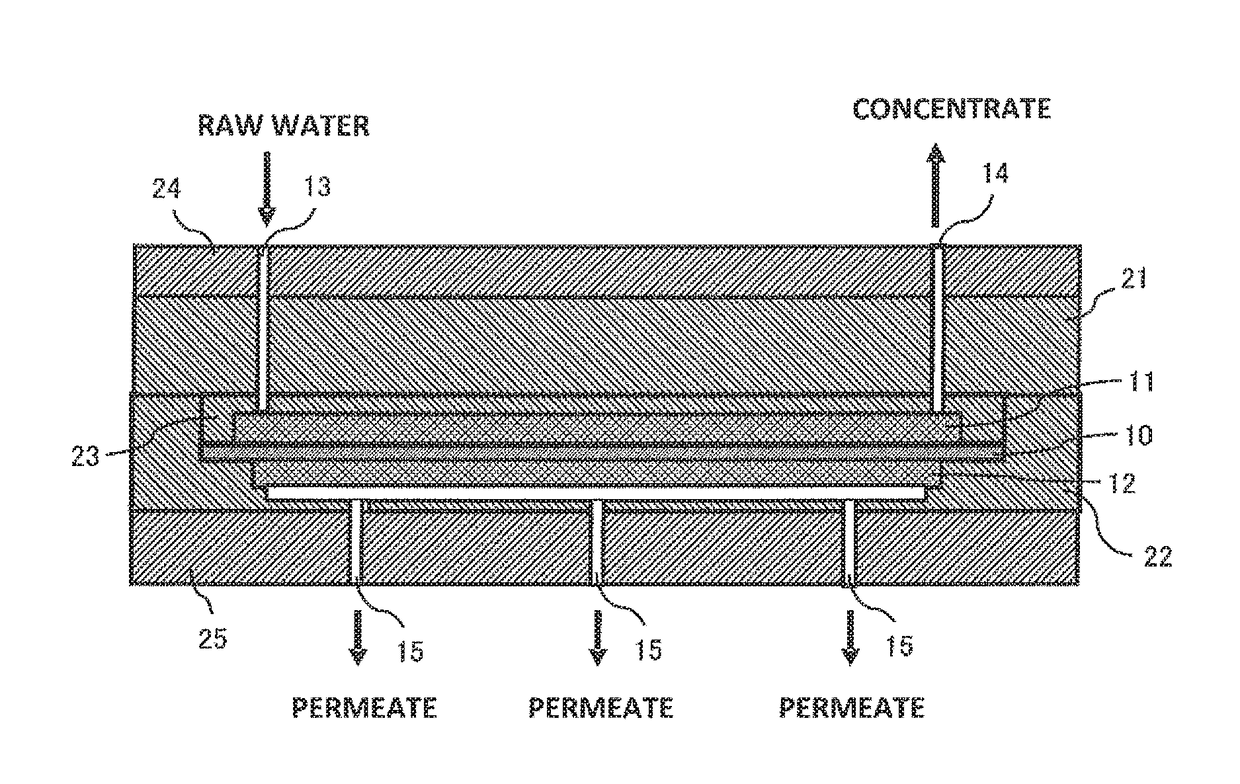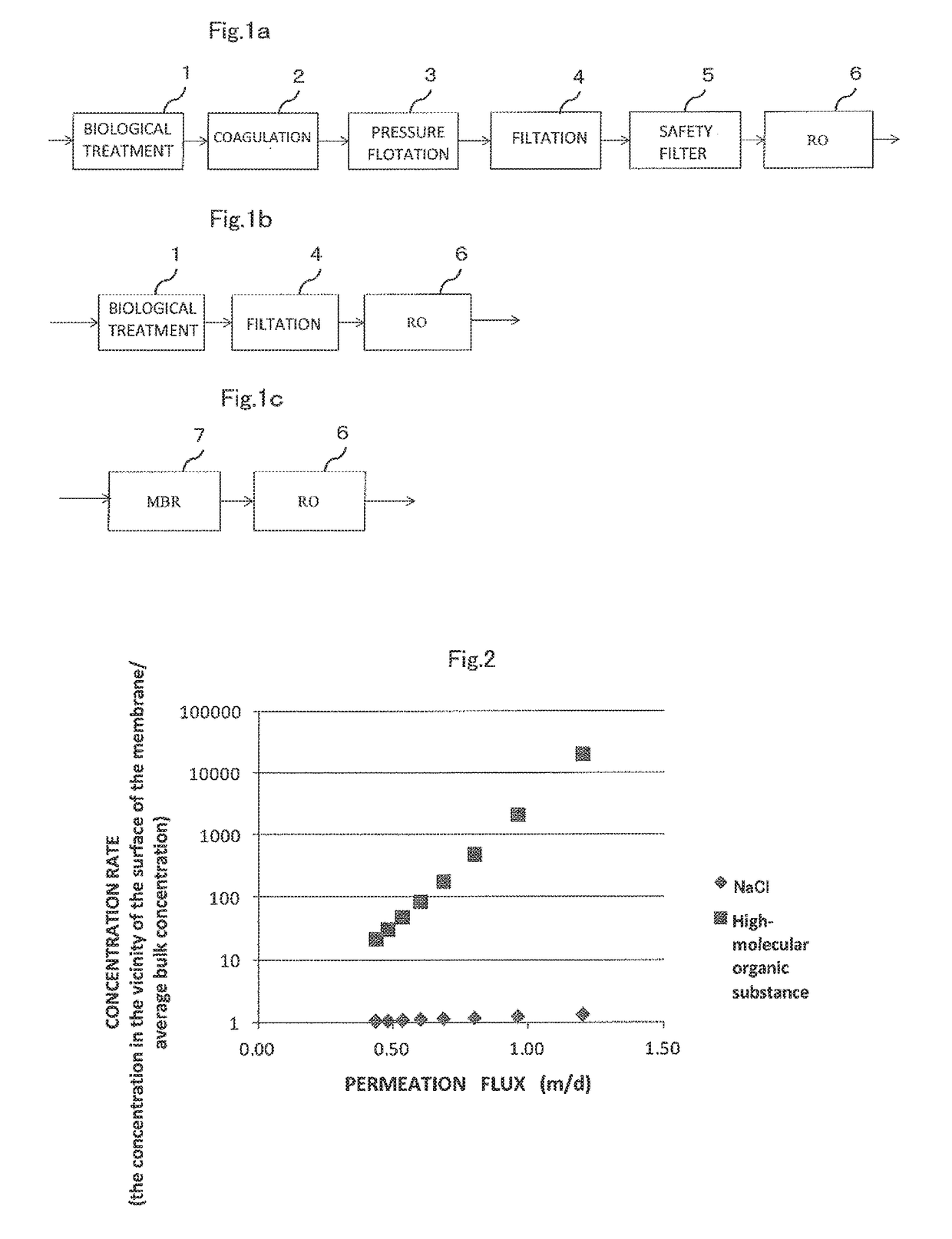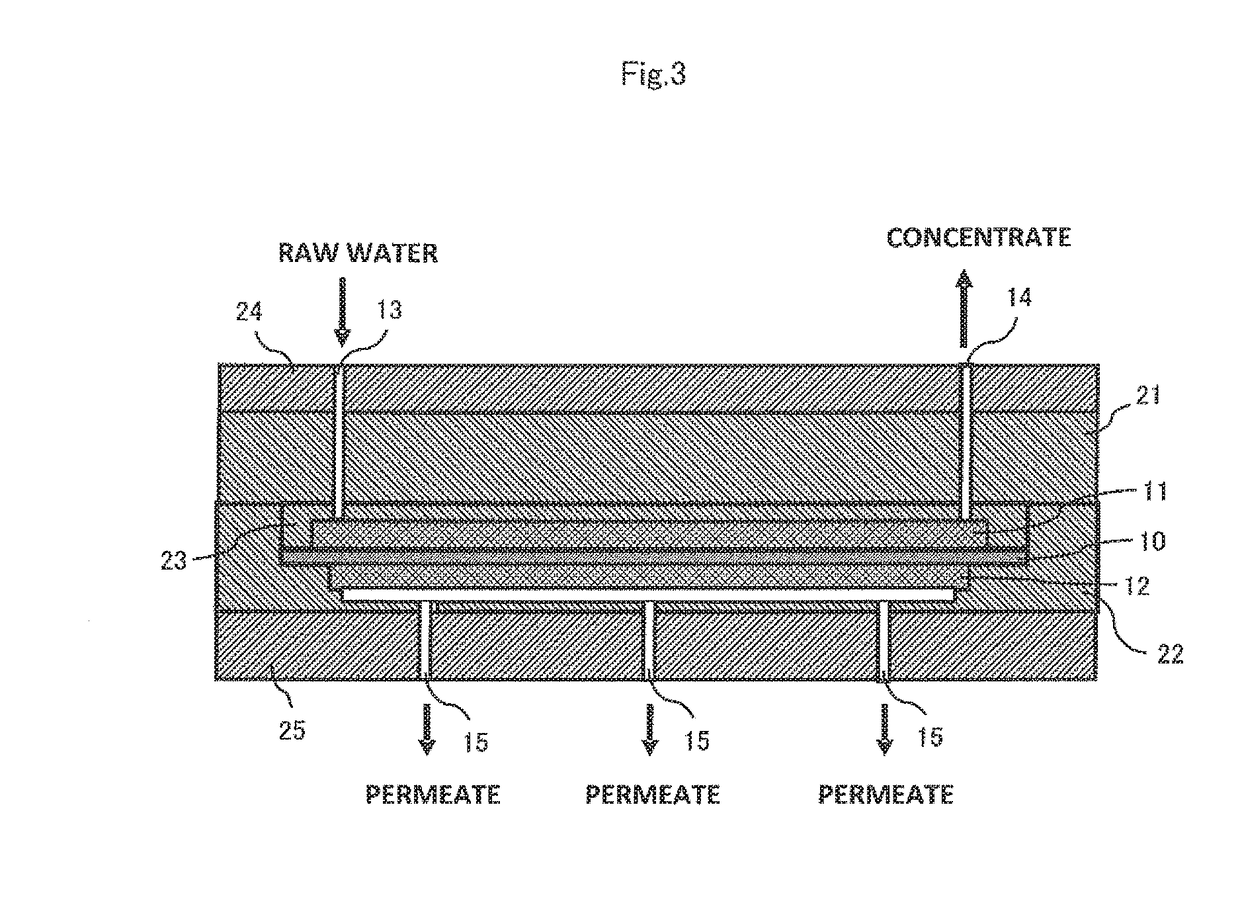Reverse-osmosis-membrane device and method for operating the same
a reverse osmosis membrane and membrane technology, applied in the field of reverse osmosis membranes, can solve the problems of increasing the risk of solid particles entering the channel, reducing the area of the membrane per element and the amount of permeate per element, and reducing the area of the reverse osmosis membrane per element, so as to reduce the thickness of the membrane, prevent the reduction of the amount of permeate, and increase the area of the reverse osmosis membrane
- Summary
- Abstract
- Description
- Claims
- Application Information
AI Technical Summary
Benefits of technology
Problems solved by technology
Method used
Image
Examples
reference example 1
[0059]Eight-inch spiral reverse-osmosis-membrane elements each including a feed spacer having a thickness of 0.71 mm, a permeate spacer having a thickness of 0.23 mm, and a reverse osmosis membrane having a different thickness were prepared. For each of the above reverse-osmosis-membrane elements, the area of the membrane per element and the permeation flux corresponding to the amount of permeate of 1.1 m3 / h were calculated. Table 1 summarizes the results.
TABLE 1Thickness ofreverse osmosisArea ofPermeationmembranemembraneflux(mm)(m2)(m / d)0.1341.80.630.1044.00.600.0845.60.580.0647.30.560.0350.20.526
[0060]The results shown in Table 1 confirm that reducing the thickness of the reverse osmosis membrane increases the area of the membrane per element and enables the permeation flux to be reduced while the amount of permeate is maintained to be constant.
reference example 2
[0061]The relationship of the permeation flux and the concentration rate (the concentration in the vicinity of the surface of the membrane / average bulk concentration) in a reverse-osmosis-membrane separation treatment was determined for each of the case where an aqueous NaCl solution was used as raw water and the case where water including a high-molecular organic substance having an average molecular weight of 10,000 was used as raw water. FIG. 2 illustrates the results.
[0062]The results shown in FIG. 2 confirm that, in general, the concentration of a high-molecular organic substance in the vicinity of the surface of the membrane significantly increases with an increase in the permeation flux and a reduction in the average linear velocity compared with a substance having a small molecular weight, such as NaCl, although the increase in concentration may vary somewhat depending on the type of the high-molecular substance.
example 1
[0063]A long-fiber nonwoven fabric was prepared in the following manner in accordance with the method described in Japanese Patent Publication 2009-57654A.
[0064]Polyethylene terephthalate including titanium oxide and a copolyester having an isophthalic acid-copolymerization ratio of 10% by mole which included titanium oxide were melted at 295° C. and 280° C., respectively. The polyethylene terephthalate, which served as a core component, and the copolyester, which served as a sheath component, were extruded from orifices of a spinneret having a temperature of 300° C. such that the ratio between the weights of core and sheath was 80:20 and spun as core-sheath filaments with an ejector. The core-sheath filaments were collected on a moving net conveyor as a fiber web. The fiber web was subjected to thermo-compression bonding with a pair of upper and lower flat rollers. Thus, a spunbond long-fiber nonwoven fabric having a thickness of 70 μm was prepared.
[0065]
[0066]In 82 parts by weight...
PUM
| Property | Measurement | Unit |
|---|---|---|
| thickness | aaaaa | aaaaa |
| area | aaaaa | aaaaa |
| thickness | aaaaa | aaaaa |
Abstract
Description
Claims
Application Information
 Login to View More
Login to View More - R&D
- Intellectual Property
- Life Sciences
- Materials
- Tech Scout
- Unparalleled Data Quality
- Higher Quality Content
- 60% Fewer Hallucinations
Browse by: Latest US Patents, China's latest patents, Technical Efficacy Thesaurus, Application Domain, Technology Topic, Popular Technical Reports.
© 2025 PatSnap. All rights reserved.Legal|Privacy policy|Modern Slavery Act Transparency Statement|Sitemap|About US| Contact US: help@patsnap.com



